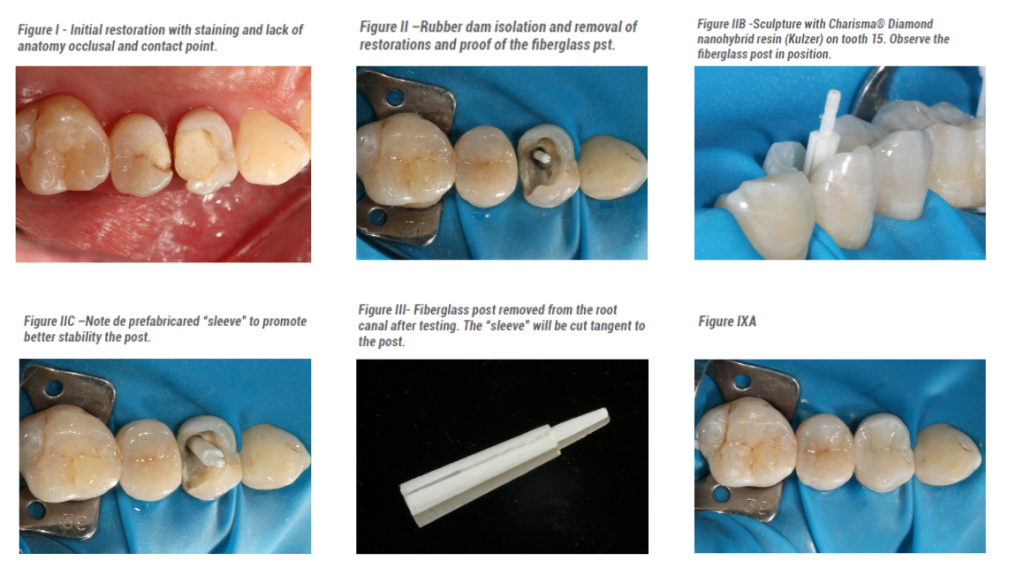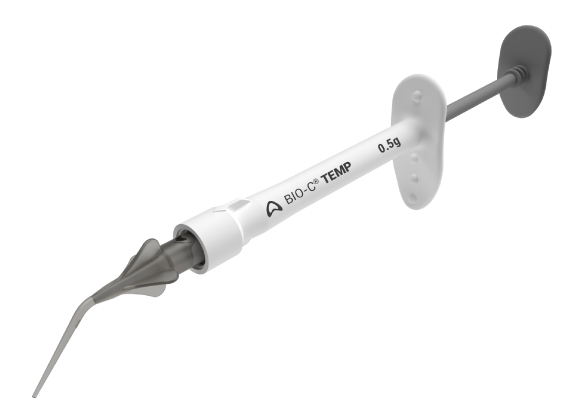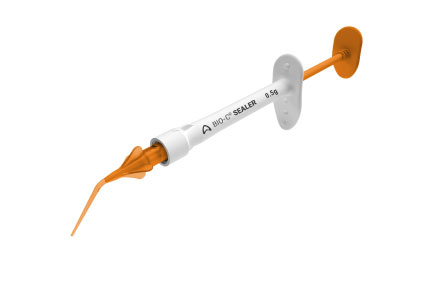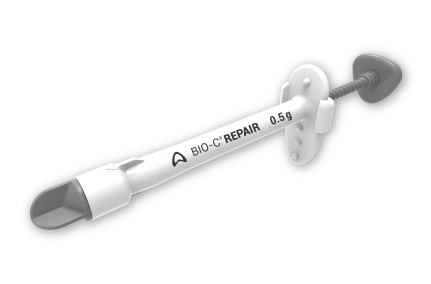Restoration of posterior teeth: direct composite resin in vitalpulp teeth and fiberglass post in non-vital teeth
Endodontics | Angelus
Leonardo Fernandes da Cunha
Raiane Mayara Schmoeller Ferreira
Carla Castiglia Gonzaga
Gisele Maria Correr Nolasco
Introduction
Restoration in posterior teeth with composite resin is a common practice in recent years1,2,3. These materials have high aesthetics, low cost, and the low polymerization shrinkage.Some of these materials allows the application of larger increments 4.
Fiberglass posts associated with composite resins for posterior teeth restoration have an elasticity module similar to dentin5. In this case, the Splendor fiberglass post system was used for restoration with resin of the endodontically treated premolar.
The association of the fiberglass post with composite resin produces a good adaptation within the dentin / cement / post interface and favorable elastic modulus. The technique is fast and simple 6.
Thus, this case report describes, through two teeth, the application of composite resin in a vital pup premolar and an endodontically treated one associating a fiberglass post in the latter. Final restorations were carried out with maximum aesthetics using bulk-fill resins from different manufacturers.
Clinical case report
A 38-year-old female patient sought care with discomfort during chewing on the right side. Absence of painful symptoms and presence of composite resin restorations with wear, marginal discoloration and lack of contact point (Fig. 1). The complementary radiographic examination showed normality of the periodontal and periapical complexes.
It was decided to replace the restorations to favor anatomy and proximal contour with nanohybrid resin Charisma® Diamond (Kulzer), in color B1. After isolation with rubber dam and removal of the previous restoration, an average depth of the cavity and enamel integrity were found on the margins of the cavity of the maxillary right second premolar.
A 2135 diamond tip was used to prepare and finish the cavity and remove fragile enamel prisms. The cavity was cleaned with chlorhexidine solution and then GLUMA® Bond Universal adhesive system (Kulzer) was applied.Light cured polymerization was carried out according to the manufacturer’s instructions. The increments were applied to the cavity and the sculpture was made with explorer probe number #5 in order to favor the anatomy. The material was polymerized for the time recommended by the manufacturer using Radii Plus device (SDI).
The first maxillary premolar showed adequate endodontic treatment, without periapical lesion. A fiberglass post system recently launched on the market – Splendor (Angelus) was selected. The root canal filling material was removed with Gates and Largo drills. The post was tested and the excess part of it was cut with a diamond disk.
The post and sleeve were cemented using a selfadhesive resin cement, following the manufacturer’s instructions. The following build-up and restoration were performed with nanohybrid composite resin Charisma® Diamond (Kulzer). After removing the rubber dam isolation, the occlusal contacts were checked and adjusted and the restorations were finished and polished.
Case photos

Discussion
Currently, direct composite resins are widely used in posterior teeth.2 The direct technique also has the advantage of not requiring a laboratory phase, with a smaller number of clinical sessions, culminating in a lower cost compared to indirect restorations. In addition, the direct adhesive restorative system has evolved significantly in recent years 4.
Several resins are available in the current market. In the presented case, Charisma Diamond nanohybrid resin was used. The two restored teeth showed satisfactory results. In addition, the resin presented a consistency of easy insertion and manipulation for posterior teeth, thus favoring the sculpture.
Fig. 4A and 4B: Observe the “chameleon effect” of the resin using only one color of the Charisma Diamond resin. Final aspect of the restorations after finishing and final polishing.
The post used decreases the resin cement layer. A large cement line between the prefabricated post and root canal walls could cause the post to shift7. In addition, thicker layers of cementation material will produce more contraction stress, probably creating more tension during polymerization and reducing the bond strength7,8. Afull crown option was not used due to the reasonable amount of coronary remnant and financial reasons.
Conclusion
The techniques with composite resins on vital pulp and endodontically treated posterior teeth associating a new fiberglass intraradicular post system are conservative, efficient and still provide acceptable aesthetics with reduced clinical time.
References
Furuse AY, da Cunha LF, Benetti AR, Mondelli J. Bond strength of resin-resin interfaces contaminated with saliva and submitted to different surface treatments. J Appl Oral Sci. 2007 Dec;15(6):501-5.
Cunha, L. F.; Nunes IS ; Kurokawa LA ; Mondeli, José . Princípios e técnica de preparos dentários para restaurações de resina composta em dentes posteriores. Full Dentistry in Science, v. 3, p. 282-287, 2010.NagpalR,ManujaN,TyagiS,SinghU.In vitrobondingeffectivenessofself-etchadhesiveswithdifferentapplicationtechniques:amicroleakageandscanningelectronmicroscopicstudy. JConservDent.2011;14:258–63.
Nagpal R, Manuja N, Tyagi S, Singh U. In vitro bonding effectiveness of self-etch adhesives with different application techniques: a microleakage and scanning electron microscopic study. J Conserv Dent. 2011;14:258–63.
QualtroughAJ,MannocciF.Tooth coloredpostsystems:areview. OperDent.2003;28:86–91. 5. ParčinaI,Amižić,BarabaA.EstheticIntracanalPosts. ActaStomatolCroat.2016Jun;50(2):143-150.Review.
HunterAJ,FloodAM. Therestorationofendodonticallytreatedteeth. Part3Cores.AustDentJ.1989;34:115–121.
KremeierK,FasenL,KlaiberB,HofmannN.Inf luenceofendodonticposttype(glassfiber,qu artzfiberorgold)andlutingmaterialonpushoutbondstrengthtodentininvitro. DentMater.2007;24:660–666.
Produtos em destaque
 Materiais Informativos
Materiais Informativos
Acesse bula, catálogo, perfil técnico e trilhas de conhecimento para saber mais sobre nossos produtos!
Leia também
Nenhum caso clínico encontrado 😅
We use cookies to provide you with a better experience, improve performance, analyze how you interact on our website and customize content. By using this website, you agree to the use of cookies.
OK, I GOT ITWe use cookies to provide you with a better experience, improve performance, analyze how you interact on our website and customize content. By using this website, you agree to the use of cookies.

SAC
Specialized Customer Service
Monday to Friday, from 7:30 a.m to 5:30 p.m (GMT-3).


